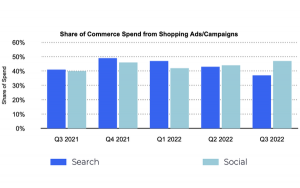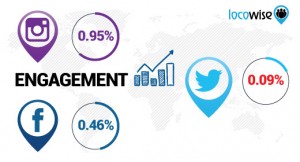You may know who your customers are. But do you know who your potential customers are?
Have you worked on audience development?
We hear things like:
“Find out want your customer wants and then sell them that!“
But is it really that easy for businesses to snag sales?
If you were to ask Henry Ford, he’d tell you it’s not just about what the audience wants, as he famously said:
“If I had asked my customers what they wanted, they would have said a faster horse.“
It’s not that we shouldn’t ask our potential clients what they want, we should.
And we should definitely keep asking and keep listening.
But if it were as simple as asking people what they wanted, we’d all be RICH!
The honest truth is, there’s more to just asking questions when it comes to audience development.

Step One: Audience Development
It’s silly of businesses to waste time developing content — whether on their website, blog or social channels — without first understanding who they are talking to.
If you’re not interested in wasting time, or money, start with developing buyer personas.
You can base these off of current clients, or if you’re a startup, create them based on your ideal customers.
Interview your past and current customers. You have to get your hands dirty to do it right!
And when you’re done figuring out who your prospects are?
Identify:
- Brand advocates
- Industry influencers
Now that you’ve got seats filled, it’s time to get to know your audience a little better.
Step Two: Better Audience Development
Also known as Research, Research, Research!
Note: I don’t really like calling this Step Two because this step should constantly be on repeat in the background.
Here’s where you should be asking your audience what they want:
- What are their pain points? How can you solve these?
- How does using your product/service make them a hero? Change their life? Better their business?
- What content does your audience engage with (likes, comments, shares, favorites, retweets, etc.)?
- What content converts? [Here are 5 simple ways to convert with content]
- What do customers buy again and again? What’s not selling?
Ask in real-time, ask with surveys. Ask with nurture campaigns and with segments in mind.
ALWAYS. BE. ASKING.
And listening. Because sometimes we get so caught up in the ask and data, that we forget to actually listen to what’s being said.
This is where you see some companies trying to sell the same tired thing over and over again.
With a discount. Then a DEEP discount. Then as a half-assed repackaged deal.
Don’t be that guy.
Listen, and LET GO when people tell you they aren’t interested.
Then keep researching what is working and figure out how to improve.
Step Three: Nurture
You have to be ready for that, too.
And that means nurturing prospects until they’re ready to buy, and also making sure they want to buy from YOU.
- How are you helping suspects become prospects (aka: getting found)?
- How do prospects become leads?
- What’s your strategy for closing leads?
- What happens to leads that don’t close?
You should have a roadmap for how content fuels your sales pipeline.
Your content should be nurturing prospects with:
- Awareness content
- Consideration content
- Decision content
- Post-sale content
If you’re not sure how to tackle this, be sure and read the post linked above.
The only way to really nail down the nurturing stage is to have a beautifully segmented list — and automation doesn’t hurt, either!
We use Infusionsoft since it helps with workflow and efficiency, but even Excel sheets and a calendar can help you get the job done.
Step 3.5: Differentiate
You’re reading this because you care about what types of customers your content is attracting.
I hope that also means you’re interested in building a relationship with your audience.
Part of what makes a good audience development strategy is setting your company apart from its competitors; telling your unique story and connecting with to those who align with your brand.
If you want your audience to:
- Trust you
- Rely on you for consistently valuable information
- Reach out to YOU when they have questions or are ready to buy
then you need to be creating stories that are relatable, shareable and solve those pain points you researched in Step Two.
You can be like everyone else and talk about what you sell, or try to pass your own, self-serving stories off as storytelling, or you can have a unique and branded story that helps your customer better understand what it is they want.
Which brings me to my next question …
Do Your Prospects Even Know What They Want?
What your customer wants today may not be what they’re looking for tomorrow.
What we want changes.
We want it super-sized, upgraded, shiny, new, and oh yeah, we wanted it YESTERDAY.

Does that mean businesses and sales leaders shouldn’t ask customers or potential customers what they want? No.
It just means asking is the beginning.
There will be many iterations of your strategy as you learn, grow and succeed.
The key is to start.
What tips or tricks do would you like to share with us for better audience development? Let us know in the comments section below!
See you in the social sphere!
(250)






